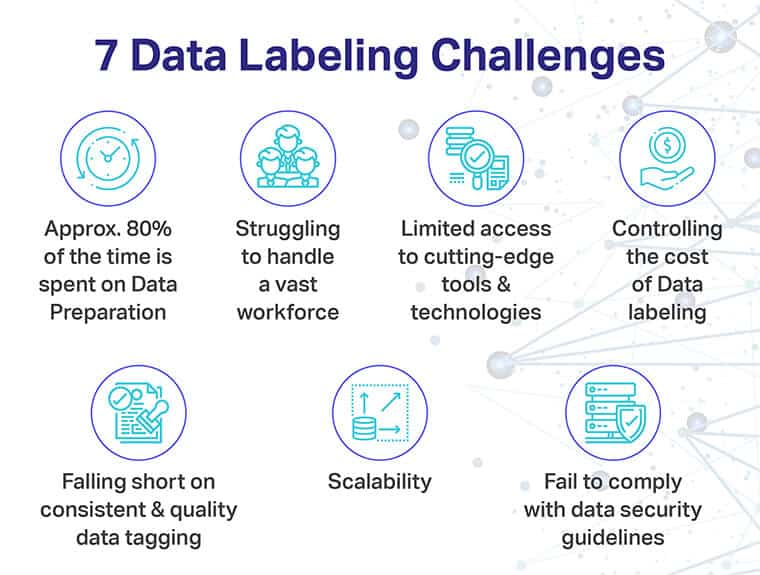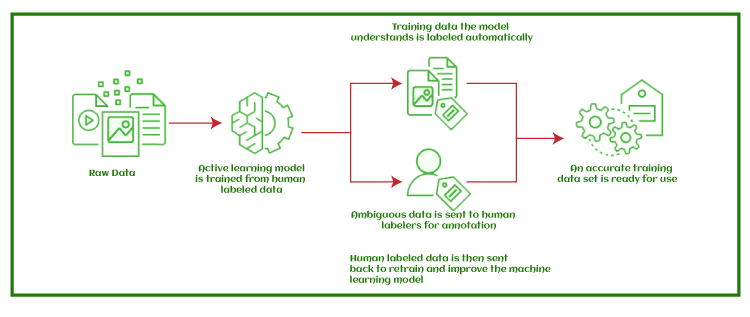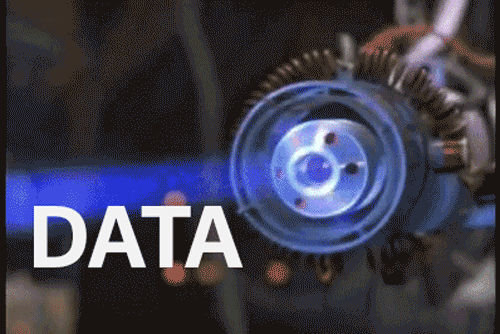What is Data Labelling?

In the field of data science and machine learning, data labelling is a critical process that involves annotating or tagging data with relevant labels or tags to provide context, meaning, and structure. It is a necessary step in preparing data for training machine learning algorithms and building models that can make accurate predictions or classifications. This article explores the concept of data labelling, its importance, methods used, and its role in enhancing the effectiveness of machine learning systems.
Definition of Data Labelling:
Data labelling, also known as data annotation or data tagging, is the process of assigning labels or tags to data points, typically in the form of text, images, audio, or video, to provide additional information or meaning. These labels serve as ground truth or reference points for training machine learning models. Data labelling helps algorithms understand and learn patterns, features, or characteristics in the data, enabling accurate predictions or classifications in the future.
Importance of Data Labelling:
Data labelling plays a crucial role in machine learning and artificial intelligence systems. Here are some key reasons why data labelling is important:
Training Machine Learning Models: Data labelling provides the necessary training data for machine learning algorithms. By associating data points with labels or tags, models can learn to recognize patterns and make accurate predictions or classifications.
Supervised Learning: Data labelling is particularly essential in supervised learning, where models learn from labeled examples. Labeled data helps algorithms understand the relationship between input data and the desired output, allowing them to generalize and make predictions on unseen data.
Improved Accuracy: Properly labelled data enhances the accuracy and performance of machine learning models. When models are trained on accurately labelled data, they can identify patterns and make informed decisions, leading to more reliable predictions or classifications.
Methods of Data Labelling:
Data labelling can be performed using various methods, depending on the type of data and the specific task at hand. Some common methods include:
Manual Labelling: Manual labelling involves human annotators carefully reviewing and labelling each data point. Human experts assess the data, apply appropriate labels, and ensure consistency and accuracy. Manual labelling can be time-consuming but is often necessary for complex or subjective tasks.
Rule-based Labelling: Rule-based labelling involves defining predefined rules or heuristics to automatically assign labels to data points. These rules are typically based on patterns or specific criteria, allowing for faster labelling of large datasets. However, rule-based labelling may be less flexible and may not capture more nuanced or context-dependent information.
Semi-supervised Labelling: In semi-supervised labelling, a combination of manual and automated methods is used. Initially, a small portion of the data is manually labelled, forming a labeled dataset. Machine learning algorithms are then employed to propagate labels to the remaining unlabeled data based on the patterns observed in the labeled data.
Applications of Data Labelling:
Data labelling finds application in various fields and domains. Some common applications include:
Image and Object Recognition: Data labelling is crucial in training computer vision models to recognize and classify objects within images. Labelling images with object boundaries or categories enables models to learn to identify objects accurately.
Natural Language Processing: In natural language processing tasks, such as sentiment analysis or named entity recognition, data labelling is essential. Annotating text with sentiment labels or identifying entities in text enables models to understand language semantics and extract meaningful information.
Autonomous Vehicles: Data labelling plays a critical role in training self-driving cars. Annotating images, videos, or LiDAR data with information such as lane boundaries, traffic signs, and pedestrian locations helps autonomous vehicles navigate and make informed decisions.
Speech Recognition: In speech recognition applications, transcribing and annotating audio data with corresponding text labels is crucial. These labelled audio datasets help train models to accurately transcribe spoken words and enable speech-to-text systems.
Data labelling is a fundamental step in preparing data for machine learning models. It involves annotating or tagging data with relevant labels or tags, providing context and structure to the data. Properly labelled data enhances the accuracy and performance of machine learning systems, enabling them to make accurate predictions or classifications. From computer vision to natural language processing and autonomous vehicles, data labelling finds applications in various domains. As machine learning continues to advan
All things considered, 80% of the time spent on an AI project is fighting preparing information, including information naming.
When assembling an AI model, you’ll start with a huge measure of unlabeled information and there you should have the knowledge of data labelling.
Instructions to do data labelling

Data labelling is a crucial step in preparing data for machine learning tasks, as it involves annotating or tagging data with relevant labels or tags. Properly labelled data is essential for training machine learning models and improving their accuracy. Here are step-by-step instructions to guide you through the data labelling process:
Define the Labelling Task:
Begin by clearly defining the labelling task. Determine the specific labels or tags you need to assign to the data. For example, if you are working on an image classification task, identify the categories or classes you want to assign to each image.
Select the Labelling Method:
Choose the most appropriate labelling method for your task. Options include manual labelling, rule-based labelling, or semi-supervised labelling. Consider the complexity of the task, the amount of data you have, and the available resources when making your selection.
Prepare the Labelling Environment:
Set up the labelling environment, which can be a software tool or a custom interface. There are various labelling tools available, such as Labelbox, RectLabel, or VGG Image Annotator (VIA). These tools provide a user-friendly interface to aid in the labelling process.
Develop Labelling Guidelines:
Create clear and comprehensive guidelines to ensure consistency and accuracy in the labelling process. Document the criteria for each label or tag, including examples and specific instructions for challenging cases. This step is crucial, especially if multiple labellers are involved, as it helps maintain consistency across the labelled data.
Start Labelling:
Begin labelling the data based on the guidelines. If you are manually labelling, carefully review each data point and apply the appropriate label or tag. Ensure that you adhere to the guidelines and maintain consistency throughout the process. Take your time to accurately assign labels, especially in cases where the decision may be subjective or ambiguous.
Quality Assurance and Iterative Refinement:
Perform regular quality checks and iterate on the labelling process. Review a subset of the labelled data to verify the correctness and consistency of the labels. Address any discrepancies or errors found during the review and refine the labelling guidelines if necessary. This iterative process helps improve the quality of the labelled data and ensures its reliability.
Manage the Labelled Data:
Organize and manage the labelled data efficiently. Maintain proper documentation of the labelled data, including information about the labelling process, any challenges or decisions made, and any revisions to the guidelines. Store the labelled data in a structured format that is easily accessible for further analysis or model training.
Monitor and Maintain Consistency:
Ensure ongoing consistency in the labelling process, especially when dealing with large datasets or multiple labellers. Continuously communicate with the labellers, address questions or ambiguities promptly, and provide clarifications or updates to the guidelines as needed. This helps maintain a consistent approach to labelling throughout the project.
Expand and Iterate:
As your project progresses, you may encounter new scenarios or require additional labels. Be prepared to expand the labelling task and update the guidelines accordingly. This iterative process allows for continuous improvement and adaptation to evolving requirements.
Documentation and Versioning:
Keep track of the labelling process, including versioning of the guidelines and the labelled data. Maintain clear documentation to ensure reproducibility and traceability of the labelling process. This documentation aids in future reference and helps with auditing or reproducing results.
Data labelling is a critical process in preparing data for machine learning tasks. By following these instructions, you can effectively label your data, ensuring accuracy, consistency, and reliability. Remember to define the labelling task, select the appropriate labelling method, develop clear guidelines, and iterate on the process to maintain quality. Effective data labelling lays the foundation for training accurate machine learning models and is crucial for successful AI applications.
Information names should be exceptionally exact to show your model to make right forecasts.
The information naming cycle requires a few stages to guarantee quality and precision.

Data Labelling Approaches
Data labelling is a crucial step in machine learning and data analysis tasks, as it involves annotating or tagging data with relevant labels or tags. Properly labelled data is essential for training models and enabling accurate predictions or classifications. There are various approaches to data labelling, each with its own benefits and considerations. This article explores different data labelling approaches to help you choose the most suitable method for your specific task.
Manual Labelling:
Manual labelling involves human annotators reviewing each data point and assigning the appropriate labels or tags. This approach offers a high level of accuracy and flexibility, as human experts can make nuanced judgments and handle complex cases. Manual labelling is ideal for subjective tasks, such as sentiment analysis or image object recognition, where human judgment plays a significant role. However, it can be time-consuming and costly, especially for large datasets.
Rule-based Labelling:
Rule-based labelling involves defining predefined rules or heuristics to automatically assign labels to data points. These rules are based on patterns, specific criteria, or heuristics that can be applied to the data. Rule-based labelling is efficient for tasks with well-defined patterns or characteristics. For example, in text classification, specific keywords or phrases can be used as rules to assign labels. While rule-based labelling is fast and scalable, it may lack the flexibility to handle complex or nuanced cases.
Active Learning:
Active learning is an iterative approach that combines manual labelling with machine learning. Initially, a small subset of the data is manually labelled, and a model is trained on this labeled data. The model is then used to make predictions on the unlabeled data, and the instances that are uncertain or require clarification are selected for manual labelling. This approach allows for a more focused and targeted annotation effort, reducing the overall labelling workload. Active learning is particularly useful when there is a limited budget for manual labelling or when expert annotations are required.
Crowdsourcing:
Crowdsourcing involves outsourcing the data labelling task to a crowd of individuals, often through online platforms. It allows for large-scale labelling at a lower cost and can be faster than manual labelling. Crowdsourcing leverages the collective wisdom of a diverse group of workers, ensuring a broader perspective. However, it requires careful management to maintain quality and consistency, as the workers may have varying levels of expertise and subjectivity. Proper quality control measures, clear instructions, and worker feedback are crucial for successful crowdsourcing.
Transfer Learning:
Transfer learning leverages pre-existing labelled datasets or models to aid in data labelling. Instead of starting from scratch, a model trained on a related task or dataset can be used to provide initial labels or predictions for a new task. These initial labels can then be refined or corrected by human annotators. Transfer learning can significantly reduce the labelling effort and improve efficiency, especially when there is limited annotated data available for a specific task.
Semi-supervised Learning:
Semi-supervised learning combines a small amount of manually labelled data with a large amount of unlabeled data. Initially, a subset of the data is manually labelled, forming a labeled dataset. The model is then trained on this labeled data and uses the patterns observed to make predictions on the unlabeled data. The predictions become pseudo-labels that can be used to expand the training dataset. Semi-supervised learning is effective when manual labelling is expensive or time-consuming and can help leverage the potential of large amounts of unlabeled data.
Transfer Learning and Active Learning Hybrid:
This approach combines the benefits of transfer learning and active learning. It involves using a pre-trained model to generate initial predictions on a new task and then applying active learning to select instances for manual labelling. The model can be fine-tuned on the manually labelled data to improve performance. This approach helps leverage pre-existing knowledge while focusing manual labelling efforts on challenging or uncertain instances.
Choosing the right data labelling approach is crucial for achieving accurate and reliable results in machine learning tasks. Manual labelling offers high accuracy but can be time-consuming and costly. Rule-based labelling is efficient for well-defined tasks but may lack flexibility. Active learning, crowdsourcing, transfer learning, semi-supervised learning, and hybrid approaches provide alternative methods to balance efficiency and accuracy. Understanding the characteristics and considerations of each approach will help you select the most suitable method for your specific data labelling task.
It’s critical to choose the suitable information naming methodology for your association, as this is the progression that requires the best speculation of time and assets.
Information marking should be possible utilizing various strategies (or mix of techniques), which include:
In-house:
![DATA LABELLING 4 What Is Data Labelling and How to Do It Efficiently [2023]](https://assets-global.website-files.com/5d7b77b063a9066d83e1209c/627d122ad4fd20872e814c81_60d9afbb7cc54becbcb087c5_AI%2520food.png)
Use existing staff and assets. While you’ll have more power over the outcomes, this strategy can be tedious and costly, particularly in the event that you need to recruit and prepare annotators without any preparation.
Rethinking:
Hire transitory specialists to name information. You’ll have the option to assess the abilities of these workers for hire however will have less power over the work process association.
Publicly supporting:
You may pick rather to publicly support your information naming necessities utilizing a believed outsider information accomplice, an ideal choice on the off chance that you don’t have the assets inside.
By machine:
Data marking should likewise be possible by machine.
ML-helped information naming ought to be thought of, particularly when preparing information should be set up at scale.
It can likewise be utilized for computerizing business measures that require information classification.
Quality Assurance
Quality confirmation (QA) is a frequently disregarded yet basic part to the information naming cycle.
Make certain to have quality checks set up in case you’re overseeing information planning in house.
In case you’re working with an information accomplice, they’ll have a QA cycle effectively set up.
Train and Test
From that point, test it on another arrangement of unlabeled information to check whether the expectations it makes are precise.
You’ll have various assumptions for exactness, relying upon what the necessities of your model are.
On the off chance that your model is preparing radiology pictures to recognize disease, the exactness level may should be higher than a model that is being utilized to distinguish items in a web based shopping experience, as one could involve life and demise.
Set your certainty edge as needs to be.
When testing your information, people ought to be associated with the cycle to give ground truth checking.
Using human-on the up and up permits you to watch that your model is making the correct forecasts, distinguish holes in the preparation information, offer input to the model, and retrain it depending on the situation when low certainty or inaccurate expectations are made.
Scale
Make adaptable information naming cycles that empower you to scale.
Hope to emphasize on these cycles as your requirements and use cases advance.
